Rice wine is a versatile ingredient used in various dishes for its unique flavor. If you're out or keen to try new tastes, many substitutes for rice wine, like dry sherry, mirin, and sake, are available, offering distinct flavors to enhance your cooking. Let's look at some of these alternatives.

Jump to:
🌾 Grain Highlights
- If you find yourself without rice wine or are in the mood to try something new, this guide offers a variety of rice wine substitutes to bring out the best in your dishes.
- Discover the unique flavors and uses of alternatives like dry sherry, mirin, sake, Shaoxing wine, soju, dry white wine, and dry vermouth. Learn how to incorporate these into your recipes with tips for perfect integration.
- You'll find strategies for adjusting alcohol content, sweetness, and overall flavor to ensure your dishes remain as delightful as they are with rice wine.
🔎 Choosing the Right Rice Wine Substitute
Finding the ideal substitute for rice wine depends on the flavor nuances of your dish and your cooking approach. I'm here to guide you through the options, ensuring your dishes retain their authentic taste and essence, even without traditional rice wine.
1. Dry Sherry
Originating from Spain, dry sherry is a fortified wine with a taste similar to Chinese rice wine, making it an excellent stand-in. Its robust, sweet, and slightly nutty flavor adds depth to your meals.
Due to its higher alcohol content, it's wise to use dry sherry in moderation. It fits well in stir-fries, soups, and sauces, especially when combined with a touch of soy sauce. If you're unsure about the quantity, start small and adjust to taste.

2. Mirin
Mirin, a sweet Japanese rice wine used in cooking, offers a distinct flavor that balances well with savory or spicy dishes, serving as a fantastic rice wine alternative.
Note its sweetness and lower alcohol level, requiring adjustments in your recipe. Mirin excels in marinades, glazes, and sauces, particularly with fish or seafood. To counteract its sweetness, consider reducing other sweet components in your recipe.
3. Sake
Sake, a Japanese beverage made from glutinous rice, enhances your cooking with its subtle flavor, ensuring it doesn't overpower other ingredients.
While sake has a higher alcohol content and is less sweet compared to Chinese rice wine, it's versatile across various dishes, including stir-fries, marinades, and soups. For a sweeter touch, feel free to add a bit of sugar, aligning the sake's flavor more closely with Chinese rice wine.

4. Shaoxing Wine
For those substituting mijiu, Shaoxing rice wine, from China's Shaoxing region, is a close match. Known for its robust flavor, Shaoxing wine brings depth to dishes, especially when cooking red meat or poultry.
Use it wisely, as its strong taste can be overpowering. Beware of salted varieties if your recipe calls for a sweeter wine—checking the label can help ensure your dish turns out perfectly.
5. Soju
Soju, a beloved Korean spirit distilled from grains such as rice, wheat, or barley, offers a mild and clean taste, making it an excellent rice wine alternative. Its ability to enrich flavors without overpowering them makes it particularly suitable for various dishes.
Given its higher alcohol content, moderation is key. Begin with a modest amount and adjust to taste, ensuring the perfect balance for your dish. Soju pairs wonderfully with Korean dishes, including Bulgogi and Japchae, enhancing their flavors with its unique character.
The trick to successfully substituting soju or any other alternative is to adjust the quantities as you cook.

6. Dry White Wine
In cooking, dry white wine stands out as a versatile substitute, offering a crispness that mirrors the light, enriching effect of rice wine on dishes. Its ability to add complexity without overwhelming sweetness makes it a valuable addition to a wide range of recipes.
If your dish requires a touch of sweetness, a sprinkle of sugar can make all the difference. Dry white wine excels in various culinary contexts but is especially impactful in seafood dishes, where its nuanced flavor profile can shine.
7. Dry Vermouth
For those seeking a sophisticated alternative to rice wine, dry vermouth is a standout choice. This fortified wine, infused with a blend of botanicals, comes from Italy and France, offering a complex, herbal essence that can elevate a dish's flavor profile.
Begin with a conservative amount, adjusting to your recipe's requirements to achieve the right balance. Dry vermouth is particularly effective in enhancing sauces, marinades, and seafood recipes, adding an aromatic depth that complements without dominating the original flavors.
🙋♀️ People Also Ask [FAQs]
You can use rice vinegar as a substitute for rice wine. However, rice vinegar is more acidic, so dilute it with water and add a bit of sugar to balance the flavor. I've also put together a piece on finding the right rice vinegar substitute, which includes tips on swapping out rice wine vinegar for those looking to shake up their culinary routines.
When substituting, start with a smaller amount and adjust according to your taste. Consider the flavor profile, acidity, and sweetness of the substitute. Adjust other ingredients accordingly and be prepared to experiment to find the best match for your recipe.
Have you given this recipe a try? We'd love to hear your thoughts! Please leave us a ⭐ review below, and don't forget to tag us @theperfectrice on Instagram and Pinterest. Your feedback means the world to us, and we really appreciate it. For more recipes, follow us on Pinterest, Facebook, YouTube, and Instagram. Thank you! 🙏
🍽️ Recipe
How to Make Rice Wine
Equipment
- Fermenting jar (½ gallon) with an airlock
- Steamer
- Mixing bowl and utensils (all sterilized)
- Fine mesh strainer or cheesecloth
Ingredients
- 2 cups glutinous rice or any rice with high starch content like arborio rice
- 1 rice yeast ball 10-12g, crushed into powder (Jiuqu or Angel Rice Wine Yeast works well)
- ½ cup of boiled water cooled to room temperature
Instructions
- Rinse the rice thoroughly under cold water until the water runs clear to remove excess starch. This is essential for a clean fermentation.
- Soak the rinsed rice in enough water to cover it by at least an inch for 4-5 hours, or overnight. This helps the grains absorb water, preparing them for cooking and fermentation.
- Drain the rice and steam it on high heat for 30-40 minutes until fully cooked and tender. Let it cool to room temperature before the next steps, as warm rice can adversely affect the yeast.
- While the rice cooks, sterilize your fermenting jar, mixing bowl, and utensils. Boil them for 10 minutes or use a dishwasher's sanitizing cycle to prevent bacterial contamination. I can't stress enough the importance of sterilization.
- In the sterilized mixing bowl, mix the cooked rice with the crushed yeast ball and cooled boiled water. Ensure the grains are well-separated and coated with the yeast.
- Move the mixture to the sterilized fermenting jar fitted with an airlock. This setup lets fermentation gases escape while blocking contaminants.
- Keep the jar in a warm place, between 86ºF and 95ºF (30ºC to 35ºC), for 7-14 days. Watch for the rice becoming wet, almost liquid-like, indicating fermentation success.
- After fermentation, strain the mixture through a fine mesh strainer or cheesecloth to remove any sediments. This clarifies the rice wine, enhancing its quality and taste.
- Stir the clarified wine and refrigerate. It can be stored for up to a month. Serve chilled for the best flavor.
Notes
- Ensuring all equipment is sterile is crucial for preventing bacterial contamination, which can spoil the rice wine.
- The fermentation temperature significantly affects the speed and quality of the wine. A consistent warm environment is ideal for optimal results.
- Straining the wine after fermentation removes sediments, resulting in a clearer, more pleasant rice wine.




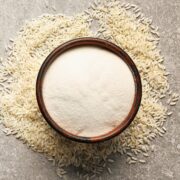


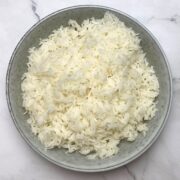



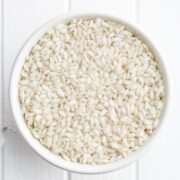



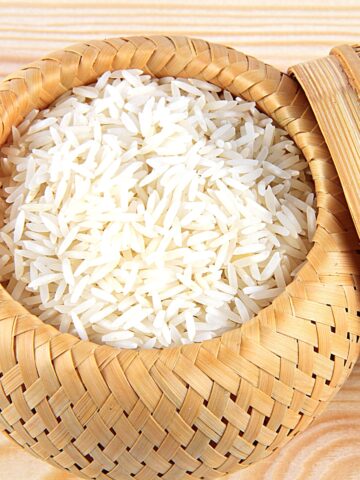
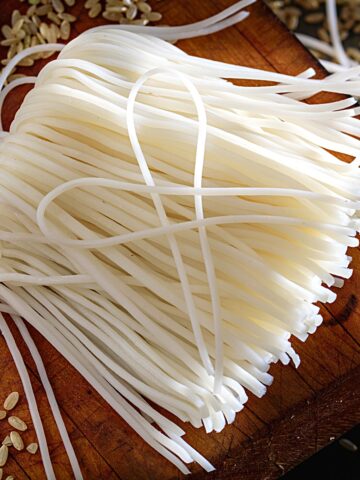

Leave a Comment